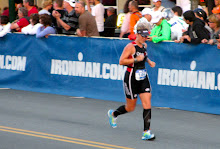Each year 1,000 teams (12,000 runners) in 2,000 vans cover 197 grueling miles as a relay, putting themselves through an arduous physical journey that as an individual would be impossible.
Some run to test their personal limits, some to overcome personal obstacles, and others leap in blindly looking for a way to shake up a complacent life. As we follow four teams from their preparations through the big day, we realize that winning isn't everything in a film that takes a celebratory look at personal motivation and attempting the extraordinary.
The four teams show the diversity that this famous race draws. We get doses of humor from the aging, but still competitive, Masters runners of "The Dead Jocks" and the woefully under-prepared and inexperienced animators-by-day, "Thunder and Laikaning". Then you have the teams for whom the relay means so much more: "Heart N' Sole", a group of 50+ women for whom this year is more special (and nerve-wracking) than most as team member Kathy runs nearly 1 year after collapsing on the course from a heart attack; and team "R.Bowe", a medley of family and friends of Ryan Bowe (who first ran HtC at age 12 with his dad), who banded together to run the relay in his honor, both celebrating his life and grieving their loss with each step.
The race itself has exploded in popularity in it's 29 years, now requiring a lottery entry to participate. From the website:
The annual Hood To Coast Relay has run every year since 1982. The race started as an inauspicious event for a group of dedicated runners to stretch their legs and expand on the everyday running experience. Bob Foote, the race founder, had run track with the famous Men of Oregon at the University of Oregon. Marathons had lost their appeal, and to keep himself interested in the sport he loved, he decided to organize an unheard of adventure, running from Timberline Lodge on Mount Hood to the Oregon Coast.
The idea was that 12 people would divide themselves into two groups of six, run three legs each and cover the nearly 200 mile distance from the mountain to the ocean. Running all through the night, it was an adventure for hard-core runners and sleep was secondary to striving for their fastest time.
More importantly, the race has become an adventure not only for serious athletes, but amateur runners and thrill seekers. Team names began to describe not only the origins of the team, but the attitude they would carry with them on the course. Today, teams decorate their vans and take on a race persona, lending a carnival atmosphere to the entire race.
As I said, the film was well-made and as a runner, quite entertaining, too. I loved how they shared a sample of the variety of experiences that are part of Hood to Coast and the wide range of people who participate. You really get a sense of community from the event, similar to that at any race when runners, volunteers, and spectators all come together in the name of running. And to see that on such a grand scale as Hood to Coast was awesome. From what I've heard, the film may be making an encore appearance in theaters, but will definitely be available to check out on DVD in the near future. If you didn't already, be sure to check it out!
Did anyone else see "Hood to Coast" on Tuesday? Have any of you run a relay before?











This comment has been removed by a blog administrator.
ReplyDelete